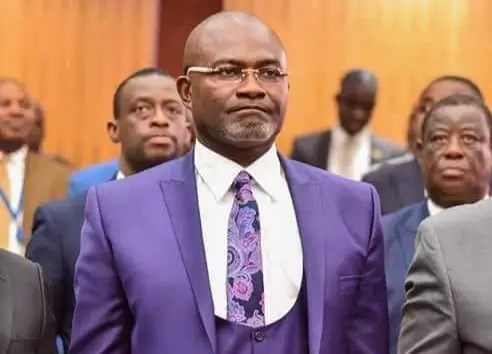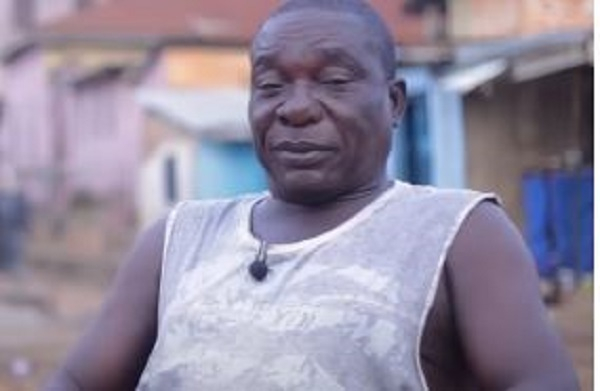
AfDB is in a position to drive sustained transformation in Africa - Akufo-Addo | 3NEWS.com

He said Africa faces a fertilizer shortage of some 2 million metric tons this year, estimated at $2 billion dollars, according to the International Fund for Agricultural Development, potentially creating a productivity deficit of twenty to fifty percent (20-50%) in agriculture.
.Africa faces a fertilizer shortage of some 2 million metric tons this year, estimated at $2 billion dollars, according to the International Fund for Agricultural Development, potentially creating a productivity deficit of twenty to fifty percent (20-50%) in agriculture.
Africa faces a fertilizer shortage of some 2 million metric tons this year, estimated at $2 billion dollars, according to the International Fund for Agricultural Development, potentially creating a productivity deficit of twenty to fifty percent (20-50%) in agriculture.
As a Triple A-rated financial institution with an active portfolio of some $61 billion in more than one hundred and forty-two thousand (142,000) locations, the AfDB is in a position to drive sustained transformation in Africa. It is in this spirit that I am happy to learn that the AfDB Board has approved funding for the $1.5 billion Africa Emergency Food Production Plan to support countries to produce food rapidly, while delivering climate-resilient agricultural technologies to 20 million farmers and thus leveraging this facility over eight (8) times. I am also encouraged to hear that the ‘right noises’ are being made towards establishing an African Financial Stability Mechanism to protect our economies from future shocks. The irony that we have a history riddled with economic shocks, but are the only continent in the world without financial buffers, has to be urgently remedied. I am persuaded that the African Financial Stability Mechanism will provide such protective cover for our economies, thus enabling us to counter effects of future pandemics amongst others. The confluence of rising challenges and expectations require that, together, we act with sustained conviction. Our support will be critical to building the Africa We Want, as espoused by Agenda 2063, from today. In addition to the pressing food, fuel and fiscal challenges, we still have to ensure that:1) the remaining eighty-five percent (85%) of the continent’s population are vaccinated against COVID-19;2) the remaining sixty percent (60%) of health facilities on the continent are connected to reliable source of electricity;3) the teeming youth, who are over sixty percent (60%) of our population, are better educated and equipped for the job market, i.e. to become a digitally enabled entrepreneurial generation;4) the Africa Continental Free Trade Area (AfCFTA) transforms Africa with her combined GDP of $3.3 trillion;5) the physical and digital infrastructural deficits are addressed; and6) the unrelenting insecurity and violence, creating about 2.5 million internally displaced people in the Sahel and elsewhere, are permanently addressed. The stakes could not be higher and clearer. To move towards resolving these, we must support the Bank to do what a Bank does – to mobilise and invest funds. We must activate a process that moves this Bank from the corridors of ‘Billions to Trillions’, given the scale of the challenges on this continent. Ultimately, the AfDB must become the dominant financing institution for African transformation in the medium term. This means we must bridge and overhaul the financing gap that exists with other complementary institutions. For instance, the financing gap between the IDA, the concessionary arm of the World Bank in Africa, and ADF now stands at almost five-fold, that is $15 billion compared to the ADF’s $3 billion per year. It is now time to: a) ease the regulations that shackles the Bank from optimising its resources.
In July last year, the IDA of World Bank (the equivalent of ADF) priced a 10-year Sustainable Development Bond that raised two billion euros (€2 billion). Subsequently, IDA’s funding programme expanded from US$ 5 billion in 2020 to US$ 10 billion in 2021. Such is the demonstrated power of the market beckoning the ADF. With an ADF equity of US$ 26 billion, the prospects could be an additional US$ 8-10 billion which could drive sustained transformation, especially for both fragile and states in transition on this continent; b) consider carefully consolidating the balance sheets of both the ADB and ADF to enable it raise more resources. There are financial efficiency, policy, and administrative gains inherent to having a single entity with a consolidated balance sheet and harmonized fundraising and governance processes. Overlapping clients and majority of our countries requiring concessional access would enable this consolidation to be beneficial; c) sustain efforts to leverage private investments into Africa. The OECD suggests that the $2.5 trillion financing gap for the SDG could balloon to $4.2 trillion. It points out that this gap could be filled by re-aligning just 1.1% of the $379 trillion in global financial assets under management. AfDB must lead in crowding in these resources; and d) demonstrate foremost interest in the proposal by the AU to explore the issuance of Security-Indexed Investment Bonds to raise funds to address the root causes of increasing insecurity and poverty. With increased financial resources, the Bank could recapitalize key African financial institutions, such as the Regional Development Banks, Afreximbank, Africa Guarantee Fund, Africa-Reinsurance Company and Africa50.
This will harness the collective institutional strengths of Africa for sustained transformation, and will, thus, avoid the situation whereby, for example, the IMF, as at the end of 2021, was able to lend forty-one billion dollars ($41 billion) to Argentina, with a population of forty-five million people, compared to thirty-four billion dollars ($34 billion) for the whole of sub-Saharan Africa, with a population of 1.14 billion people. Empowering these African institutions and engaging communities will be vital to addressing the socio-ecological challenge of our time – Climate Change. Beyond pursuing ecological restoration, the AfDB should foster a culture of proactive and risk-based approaches; away from current reactive and crisis-based practices.
Yet, only $6 billion out of the worldwide total of $30 billion of climate adaptation finance flows to Africa, even though the United Nations Environment Program has projected that between 75 million and 250 million people would be affected by climate-induced water stress.
![Woman who was attacked by robbers at Dansoman breaks silence [Listen]](https://www.adomonline.com/wp-content/uploads/2019/02/robbers-allegedly-rape-passengers-at-gunpoint.jpg)





